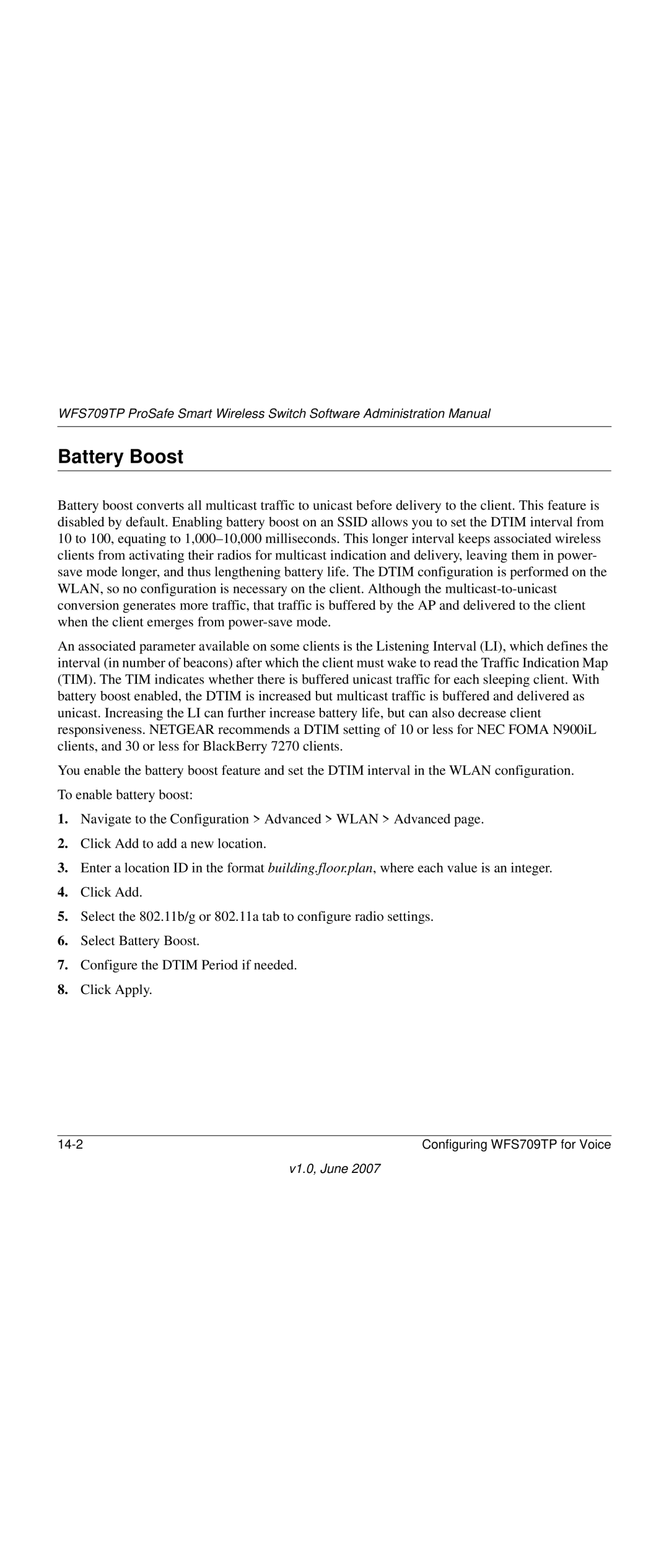WFS709TP ProSafe Smart Wireless Switch Software Administration Manual
Battery Boost
Battery boost converts all multicast traffic to unicast before delivery to the client. This feature is disabled by default. Enabling battery boost on an SSID allows you to set the DTIM interval from 10 to 100, equating to
An associated parameter available on some clients is the Listening Interval (LI), which defines the interval (in number of beacons) after which the client must wake to read the Traffic Indication Map (TIM). The TIM indicates whether there is buffered unicast traffic for each sleeping client. With battery boost enabled, the DTIM is increased but multicast traffic is buffered and delivered as unicast. Increasing the LI can further increase battery life, but can also decrease client responsiveness. NETGEAR recommends a DTIM setting of 10 or less for NEC FOMA N900iL clients, and 30 or less for BlackBerry 7270 clients.
You enable the battery boost feature and set the DTIM interval in the WLAN configuration. To enable battery boost:
1.Navigate to the Configuration > Advanced > WLAN > Advanced page.
2.Click Add to add a new location.
3.Enter a location ID in the format building.floor.plan, where each value is an integer.
4.Click Add.
5.Select the 802.11b/g or 802.11a tab to configure radio settings.
6.Select Battery Boost.
7.Configure the DTIM Period if needed.
8.Click Apply.
Configuring WFS709TP for Voice |
